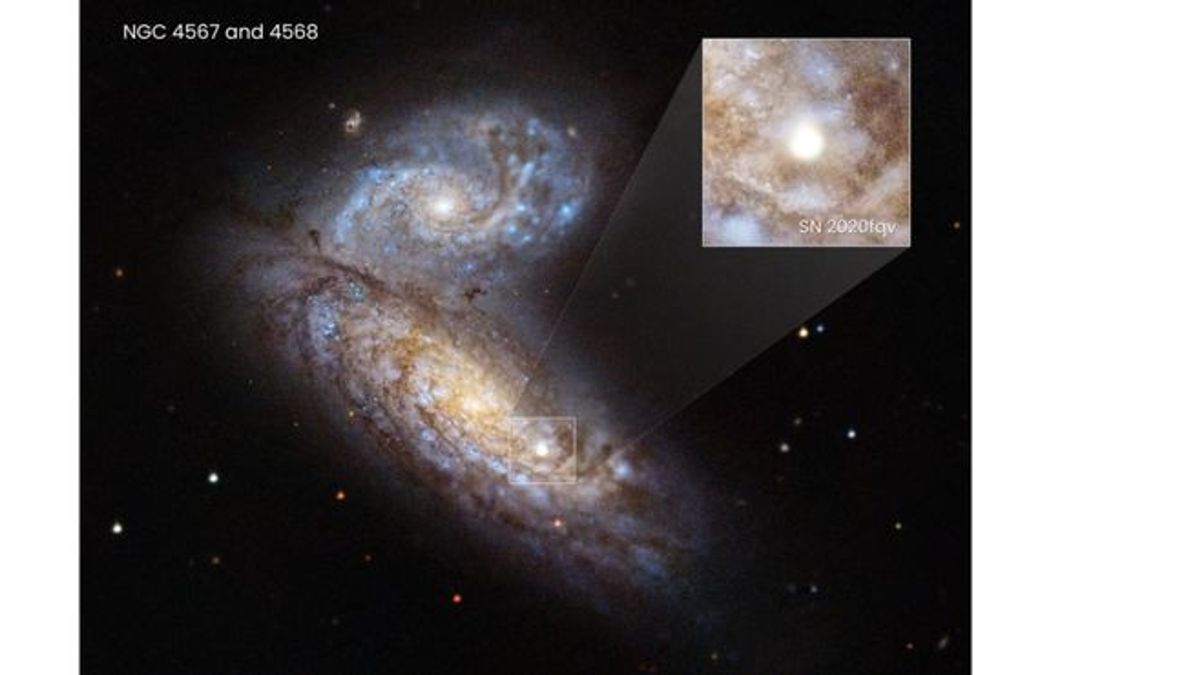
JAKARTA - Supernovae are among the most impressive space events, and thanks to NASA's ongoing Hubble telescope work, astronomers were able to analyze them earlier than usual.
The universe is filled with a seemingly endless number of stars. Each comes in different shapes and sizes and goes through different transformations. While most stars undergo gradual cooling and eventually turn into black dwarfs, some explode in powerful explosions known as 'supernovas'.
Whether it's a supernova or whatever else is happening in the universe, Hubble has become an invaluable tool for studying these things. In the past month alone, Hubble's discoveries have included a strange constellation with huge 'eyes', two galaxies that seem to dance through space, and a 'star factory' that creates stars at incredible speed.
Despite being 31 years old and facing worrying computer glitches in the summer, Hubble is one of humanity's best assets for innovative space exploration.
This point was recently proven once again thanks to Hubble's recent sighting of a supernova at its earliest stage. While astronomers have studied supernovae for centuries, they usually don't start their research until a few days after the explosion is detected.
Thanks to Hubble and the NASA Transiting Exoplanet Survey Satellite (better known as TESS), the duo recorded a star for days before it exploded, during an explosion, and for weeks afterward.
The supernova in question is called SN 2020fqv and is about 60 million light-years from the constellation Virgo. In April 2020, it was originally discovered by astronomers at the Zwicky Transient Facility. Once they realized that TESS was also observing SN 2020fqv, they decided to place Hubble on a supernova to get a better look at it. Thanks to quick thinking and teamwork, Hubble recorded supernovas in great detail.
One Step To Better Understanding Supernovas
Along with the beautiful photos, Hubble also recorded the "first holistic view" of a star in its early stages of death. When a star becomes a supernova, it shoots out something known as 'circumstellar matter'.
SEE ALSO:
Circumstellar material has a very short visibility window and is often difficult for astronomers to study. Because Hubble was in location so quickly, Hubble recorded SN 2020fqv's circumstellar material in a way that would normally not be possible.
As astronomer Samaporn Tinyanont explains, "For this supernova, we were able to make ultra-fast observations with Hubble, providing unprecedented coverage in the region right next to the exploding star".
With this new information, Tinyanont hopes to provide a better understanding of how stars die and how we can prepare to continue capturing supernovae so quickly. The SN 2020fqv documentation is impressive, but it's just one of the many supernovae in the universe that can hold valuable information.
In addition, further research into early supernovae could act as a 'warning system' for other stars. As astronomer Ryan Foley puts it, "As we discover more and more of these supernovae with this kind of extraordinary dataset, we will be able to better understand what has happened in the last few years of a star's life".
The English, Chinese, Japanese, Arabic, and French versions are automatically generated by the AI. So there may still be inaccuracies in translating, please always see Indonesian as our main language. (system supported by DigitalSiber.id)

















